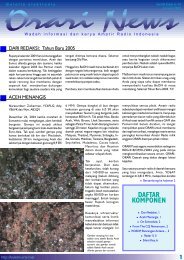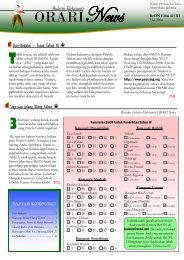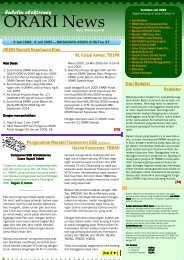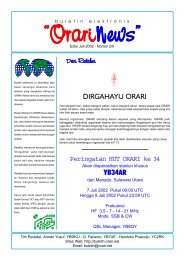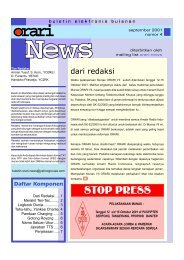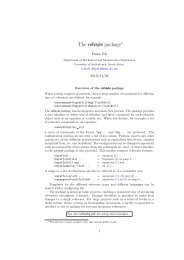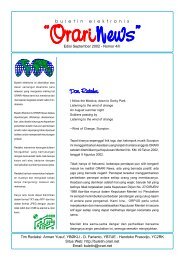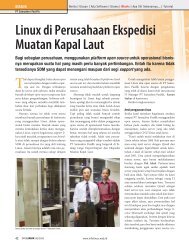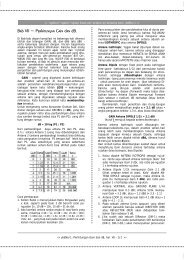Create successful ePaper yourself
Turn your PDF publications into a flip-book with our unique Google optimized e-Paper software.
Figure 29. A typical circuit for an R-F amplifier.<br />
The first step in designing the output circuit is to specify the<br />
resonant load impedance of the tube, the loaded Q of the circuit<br />
and the desired output impedance of the network. The resonant<br />
load impedance for the 4CX20,000A is determined by dividing the<br />
anode peak rf voltage swing by the anode peak fundamental rf<br />
current.<br />
Resonant Load Impedance = (formula)<br />
48<br />
RL = 9000 volts/5.4 amperes<br />
= 1667 Ohms<br />
If it is assumed that the output impedance of the network is to be<br />
50 Ohms and the loaded Q is to be 15, the output tuned circuit may<br />
now be designed.<br />
The output impedance of 50 Ohms will match into a properly<br />
terminated 50-Ohm transmission line. The loaded Q of 15 is a<br />
compromise between circuit efficiency and harmonic attenuation<br />
(see Fig. 30). Figures 31, 32, and 33 are design graphs for<br />
matching typical tube load impedances into 50 Ohms with a loaded<br />
Q of 15. The general equations are given for other load




